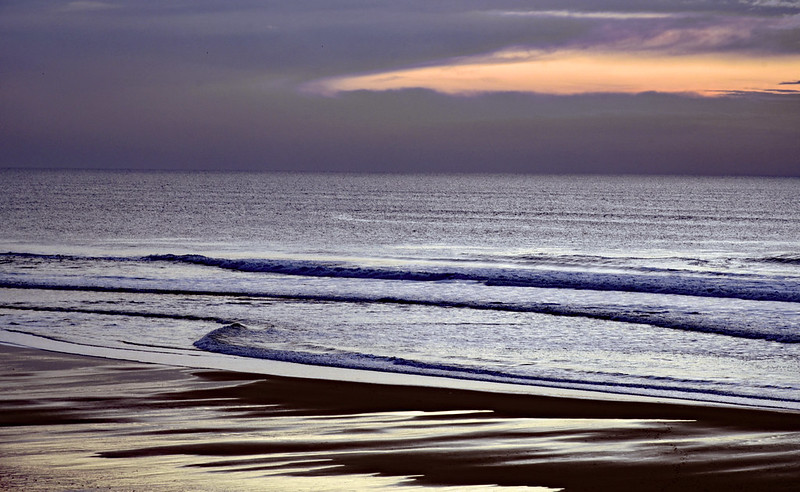As the world transitions toward renewable energy sources, the Atlantic Ocean presents a promising frontier for harnessing the immense power of tides. Tidal energy, generated by the gravitational pull of the moon and the sun on Earth’s oceans, is a predictable and reliable source of renewable energy. Unlike solar and wind, which fluctuate with weather conditions, tidal currents follow a consistent rhythm, making them an attractive energy solution.
The Atlantic Ocean, with its extensive coastline and strong tidal ranges, offers an ideal location for developing tidal energy. Countries bordering the Atlantic, such as the United Kingdom, Canada, and France, are already investing in tidal energy technologies. This article explores how tidal energy works, its benefits, the technologies driving it, and the challenges and potential of tapping into the Atlantic’s tides as a major energy resource.
What is Tidal Energy?
Tidal energy is a form of hydropower that captures the movement of water caused by the gravitational forces exerted by the moon and sun. This force creates tides that rise and fall in predictable cycles, generating potential energy as water moves between high and low tides. Tidal energy can be captured through various technologies, converting this kinetic or potential energy into electricity.
Tidal energy primarily utilizes two types of technologies:
- Tidal Stream Generators: These underwater turbines resemble wind turbines but are positioned on the ocean floor, where tidal currents drive them. As water flows through the turbines, the motion generates electricity. Tidal stream generators are effective in areas with strong tidal currents and are less invasive to coastal environments than other types of tidal energy installations.
- Tidal Barrages: A tidal barrage is a dam-like structure built across the mouth of an estuary or bay. During high tide, water flows into the basin behind the barrage, creating potential energy. When the tide recedes, the water is released through turbines, generating electricity. Although highly efficient, tidal barrages can have significant environmental impacts on marine ecosystems.
Why the Atlantic Ocean is Ideal for Tidal Energy
The Atlantic Ocean’s geography and tidal ranges make it particularly suitable for tidal energy development. Several factors contribute to this suitability:
- High Tidal Ranges: The Atlantic has some of the world’s largest tidal ranges, particularly in areas like the Bay of Fundy in Canada, where the tidal range can reach up to 16 meters (52 feet). Large tidal ranges mean greater water movement, translating to higher energy potential.
- Extensive Coastline: Countries with Atlantic coastlines, including the United Kingdom, France, the United States, and Canada, have access to numerous bays, estuaries, and inlets where tidal energy installations can be placed effectively.
- Proximity to Energy Demand: Many Atlantic-bordering countries have significant populations and industries near the coast. This proximity reduces the need for extensive transmission infrastructure, making tidal energy a cost-effective option for meeting local energy demands.
Key Regions for Tidal Energy Development in the Atlantic
1. Bay of Fundy, Canada
The Bay of Fundy, located between the Canadian provinces of New Brunswick and Nova Scotia, has the highest tidal range in the world, making it a prime site for tidal energy development. The Bay of Fundy can generate immense amounts of energy from its powerful tides, and it has attracted attention from various energy companies and researchers.
Several pilot projects, such as the Fundy Ocean Research Center for Energy (FORCE), have been established in the area to test tidal turbines and assess their impact on the environment. These projects are helping Canada establish itself as a leader in tidal energy technology, with a focus on sustainability and ecosystem preservation.
2. Orkney Islands, United Kingdom
The Orkney Islands off the northern coast of Scotland are another major hub for tidal energy in the Atlantic. With strong tidal currents, the waters surrounding Orkney are ideal for deploying tidal stream generators. The European Marine Energy Centre (EMEC) in Orkney serves as a test site for numerous tidal energy projects, providing valuable insights into turbine performance, environmental impacts, and grid integration.
Tidal projects in the Orkney Islands have helped the UK take a leading role in marine energy development, with successful trials positioning tidal energy as a viable part of the country’s renewable energy strategy.
3. Normandy and Brittany, France
The coasts of Normandy and Brittany in France experience strong Atlantic tides, making them suitable for tidal energy installations. France was a pioneer in tidal energy, establishing the Rance Tidal Power Station on the Rance River in Brittany as early as 1966. This station remains one of the largest tidal energy facilities in the world and produces around 240 megawatts of power, enough to supply a city the size of Rennes.
Today, France is working on additional projects to expand its tidal energy infrastructure, focusing on tidal stream technology, which has a lower environmental impact than traditional tidal barrages.
How Tidal Energy Works: An Overview of Tidal Power Technologies
Tidal Stream Turbines
Tidal stream turbines function similarly to underwater wind turbines, harnessing the energy of fast-moving tidal currents. These turbines are anchored to the ocean floor or mounted on floating platforms and positioned in areas with strong currents. As the tide flows in and out, the force of the water rotates the blades, generating electricity through an attached generator.
Some of the key benefits of tidal stream turbines include:
- Reduced Environmental Impact: Compared to barrages, tidal stream turbines have minimal impact on coastal ecosystems, as they do not require dams or barriers that can alter water flow and disrupt marine life.
- Scalability: Tidal stream turbines can be deployed individually or in arrays, allowing developers to scale projects according to the energy demand and available funding.
- Reliability: Due to the predictability of tides, tidal stream turbines offer a consistent source of energy, which enhances grid stability and complements other renewable sources like wind and solar.
Tidal Barrages
Tidal barrages operate by trapping water at high tide and releasing it through turbines during low tide. Although effective at generating significant amounts of power, tidal barrages can have considerable environmental impacts. They often disrupt natural water flow, affecting sediment distribution, fish migration, and estuary ecosystems.
Despite these drawbacks, tidal barrages remain a valuable option for areas with exceptional tidal ranges. Advances in barrage design aim to mitigate environmental impacts by incorporating fish-friendly turbines and minimizing alterations to natural water flow.
Tidal Lagoons
Tidal lagoons are a newer concept in tidal energy and function similarly to barrages but are constructed in bays or along coastlines rather than across estuaries. These lagoons capture water as the tide rises, and turbines generate power when the water is released. While tidal lagoons still face some environmental challenges, they offer a more flexible and potentially less invasive approach than barrages.
One proposed tidal lagoon project in the UK, the Swansea Bay Tidal Lagoon, aims to generate 320 megawatts of electricity, enough to power approximately 155,000 homes. Although still in the planning stages, this project demonstrates the potential of tidal lagoons as a renewable energy solution.
Benefits of Tidal Energy in the Atlantic
Tidal energy presents numerous benefits for Atlantic-bordering countries seeking to reduce their carbon footprint and diversify their energy portfolios:
- Predictable and Reliable: Unlike wind or solar power, tides are highly predictable. This reliability makes tidal energy a stable power source that can contribute to grid stability and complement intermittent renewables.
- Low Carbon Emissions: Tidal energy is a clean source of energy that generates no direct carbon emissions, contributing to national and global carbon reduction goals.
- Job Creation: Tidal energy projects create employment opportunities in research, engineering, construction, and maintenance, especially in coastal communities near installation sites.
- Energy Independence: Tidal energy can reduce reliance on imported fossil fuels, promoting energy security and reducing vulnerability to fluctuations in fuel prices.
Challenges Facing Tidal Energy Development in the Atlantic
While tidal energy holds promise, there are significant challenges that need to be addressed:
- High Initial Costs: Tidal energy infrastructure, particularly tidal barrages, requires substantial upfront investment. The costs of design, construction, and installation are high, though these can decrease with technological advancements and scaling.
- Environmental Concerns: Tidal energy installations can impact marine ecosystems, particularly tidal barrages, which can alter estuary environments. Tidal stream turbines have a smaller footprint but still affect local habitats. Ongoing research aims to develop technologies that balance energy generation with environmental protection.
- Technological Hurdles: The harsh conditions of the Atlantic Ocean—strong currents, waves, and saltwater corrosion—pose durability challenges for tidal energy equipment. Research is focused on developing materials and designs that withstand these conditions while remaining efficient and cost-effective.
- Regulatory and Planning Complexities: Securing permits for tidal energy projects can be a lengthy process, involving environmental assessments and stakeholder consultations. Developing tidal projects in the Atlantic requires careful planning to comply with international maritime regulations and address community concerns.
The Future of Tidal Energy in the Atlantic
The potential of tidal energy in the Atlantic remains largely untapped, but with increasing investment, advancements in technology, and global support for renewable energy, tidal power could become a cornerstone of sustainable energy strategies. Atlantic-bordering countries are collaborating on research initiatives and pilot projects to address technological and environmental challenges, building a foundation for a cleaner energy future.
Countries like Canada, the United Kingdom, and France are already leading the way, setting examples for other nations to follow. With the right policies, research, and investments, tidal energy could play a significant role in reducing carbon emissions and supporting energy security along the Atlantic coast.
Conclusion: Tapping into the Atlantic’s Tidal Power
Tidal energy offers a unique opportunity for Atlantic-bordering countries to harness a consistent, renewable, and low-emission source of power. While challenges remain, the benefits of tidal energy—such as reliability, predictability, and reduced environmental impact—make it a valuable addition to the renewable energy landscape.
As technology advances and environmental concerns are addressed, tidal energy in the Atlantic could help fulfill global climate goals and drive sustainable development. With continued investment and innovation, the Atlantic’s powerful tides hold the potential to become an enduring source of clean energy, empowering coastal communities and protecting the environment for generations to come.

